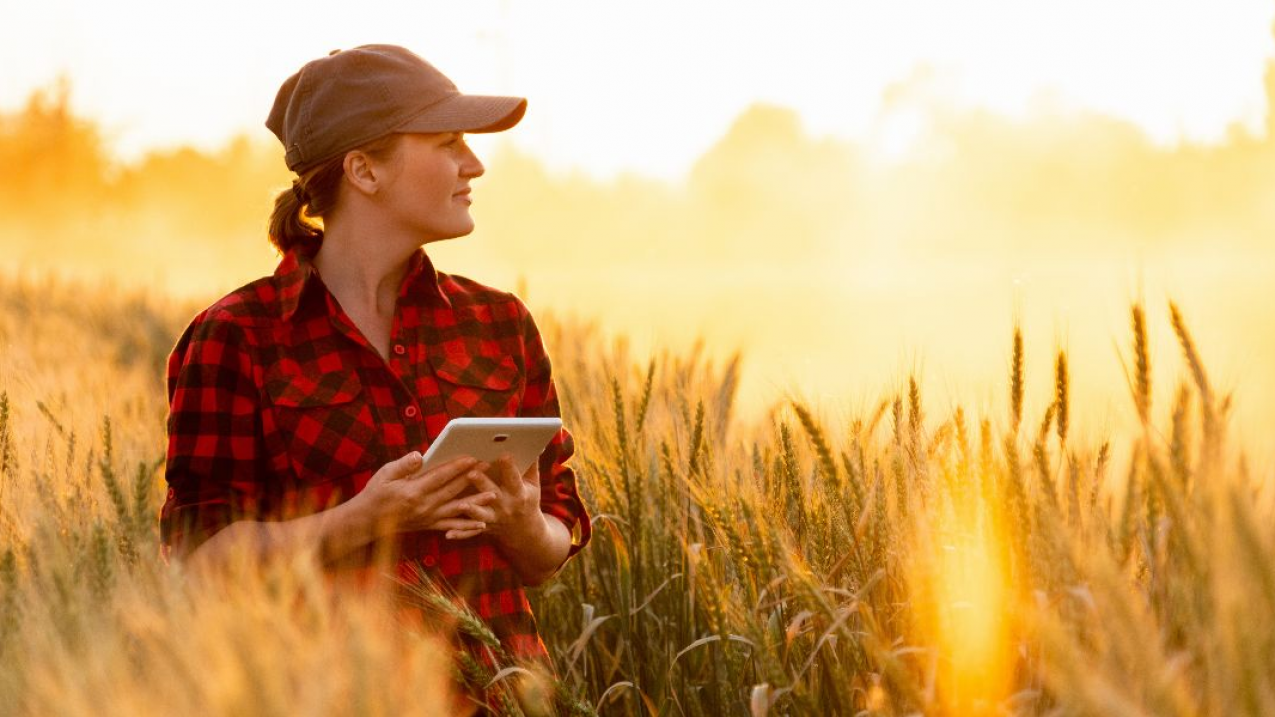June 10, 2021 - This story is republished with permission from AWS Public Sector Blog - May 21, 2021 offsite link.
Weather and climate data are important building blocks for digital farming solutions and critical for informing the numerous strategic and operational decisions that farmers must make daily. From selecting the right seed and crop production purchases, spray location and timing, or determining when to plant and harvest, having access to timely and accurate weather information is vital. However, most weather and climate data products available don’t reflect field-specific conditions and are therefore not directly relevant to the spatial and temporal scales at which farmers make their decisions. This is a particularly challenging problem for developing effective digital solutions that are applicable globally. To address this challenge, BASF Digital Farming is leveraging both National Oceanic and Atmospheric Administration (NOAA) weather data hosted on Amazon Web Services (AWS) and commercial weather data to build hyperlocal agriculture-specific weather and climate solutions that scale globally.
As part of the Amazon Sustainability Data Initiative (ASDI) offsite link, we invited Christopher Goodman (BASF), Jared Oyler (BASF), and Jenny Dissen (NOAA BDP/CISESS) to share how AWS cloud technology and open data are supporting BASF Digital Farming’s efforts to make agricultural practices more sustainable and efficient.
An advanced digital farming platform for crop optimization
With a rapidly growing population, the world is increasingly dependent on the ability to develop and maintain sustainable agriculture and healthy environments. Working with farmers, agricultural professionals, pest management experts, and others, BASF Digital Farming is developing digital farming solutions to support agriculture and crop optimization. xarvio™ Digital Farming Solutions offsite link, hosted on AWS, provides growers with valuable information on how to make better farm management decisions. xarvio™ products provide tools to help farmers effectively monitor and manage their fields, including the ability to identify crop diseases, weeds, and pests, and recommends action to mitigate these in-field issues. These digital farming tools help drive farm sustainability by enabling farmers to use crop applications more efficiently and precisely only where and when needed.
Building this platform on the secure AWS Cloud enabled xarvio™ to offer its digital farming solutions for agriculture and crop optimization to support farmers worldwide. The platform currently supports more than 4 million farmers and advisors in more than 100 countries, allowing them to consistently, closely monitor their crops. The xarvio™ SCOUTING smartphone application (app), for example, which is free to download and use, utilizes image recognition technology. It lets a farmer use their smartphone to identify early-growth weeds, diseases, and pests; map their location for sharing; keep a history; and act to mitigate.
NOAA’s weather and climate information drive farmer’s decisions
Weather science is at the forefront of BASF’s Digital Farming’s tools. Within xarvio™ Digital Farming Solutions’ products, weather and climate information is provided to growers to help them make business and strategy decisions, such as whether or not to apply an herbicide, and how to increase the effectiveness of the crop production application while minimizing cost and environmental impact. BASF Digital Farming uses the NOAA public Global Historical Climatology Network Daily (GHCN-D) offsite link and Integrated Surface Temperature Dataset (ISD) offsite link station observation datasets hosted on AWS to benchmark weather and climate data product performance and train new agrometeorological models on AWS. Such models support the farmer in targeting their planting, crop protection applications, harvest, and other operational and strategic decisions.
Other analysis-ready datasets freely available on AWS, like Landsat offsite link and Sentinel-2 offsite link, are also used to create efficient research and development (R&D) workflows and support the development of BASF Digital Farming’s solutions. Its goal is to combine foundational public open data with commercially sourced information to help farmers improve yields and adopt sustainability and environmentally friendly practices.
Weather and climate data on AWS allow for easier, faster, and cheaper data analysis
By hosting foundational data on the AWS Cloud, the NOAA Big Data Program (BDP), in collaboration with ASDI offsite link, seeks to remove some of the redundant efforts that a customer like BASF Digital Farming has to endure when discovering, accessing, and using NOAA data to support its workloads. Most of a data scientist’s effort is often associated with time consuming dataset acquisition and wrangling tasks rather than model development and knowledge creation. NOAA data staged on AWS addresses this issue by enabling both more efficient data access and analyses. BASF Digital Farming’s teams no longer need to acquire and maintain the data, and in addition, can leverage AWS scalable computing and services right next to the data.
However, because NOAA datasets are usually provided in their legacy formats (e.g., NetCDF, GRIB, CSV), the user may need additional investment to integrate datasets and conduct analysis in the cloud. Making the data available in more cloud optimized formats like Zarr or Parquet allows for users to slice and dice the data and conduct spatial temporal queries in the cloud rather than having to download each file prior to analysis. To facilitate analysis of the NOAA data on AWS, BASF Digital Farming is converting NOAA Global Forecast System (GFS) data to cloud optimized formats and analyzing the data directly with basic services like Amazon Simple Storage Service (Amazon S3) and Amazon Elastic Compute Cloud (Amazon EC2).
ASDI is working with groups like Pangeo offsite link to support data providers with further exploration on how to create cloud data optimized formats. Hosting datasets in analysis ready formats in the cloud will allow BASF Digital Farming and others to conduct research faster and cheaper, and to deliver better solutions. The NOAA data hosted on AWS through ASDI leverages the Open Data Sponsorship Program offsite link. For more information about the Amazon Sustainability Data Initiative, visit here. Visit here for more information on NOAA Big Data Program, or email NOAA.BDP@NOAA.GOV.



